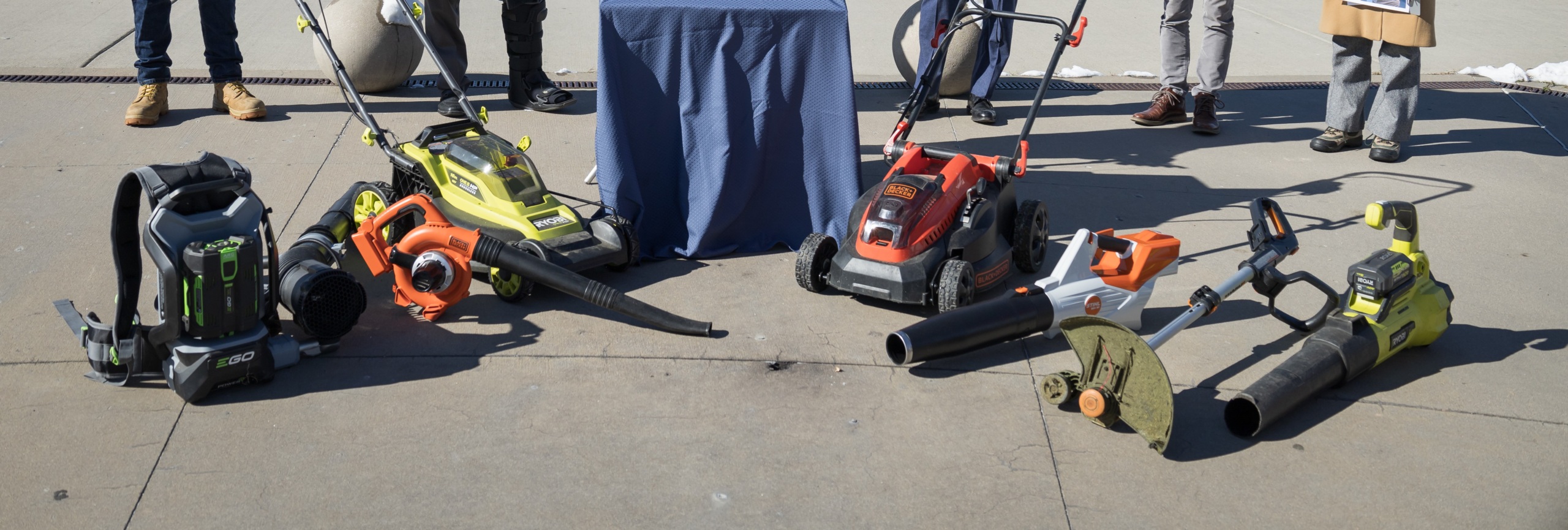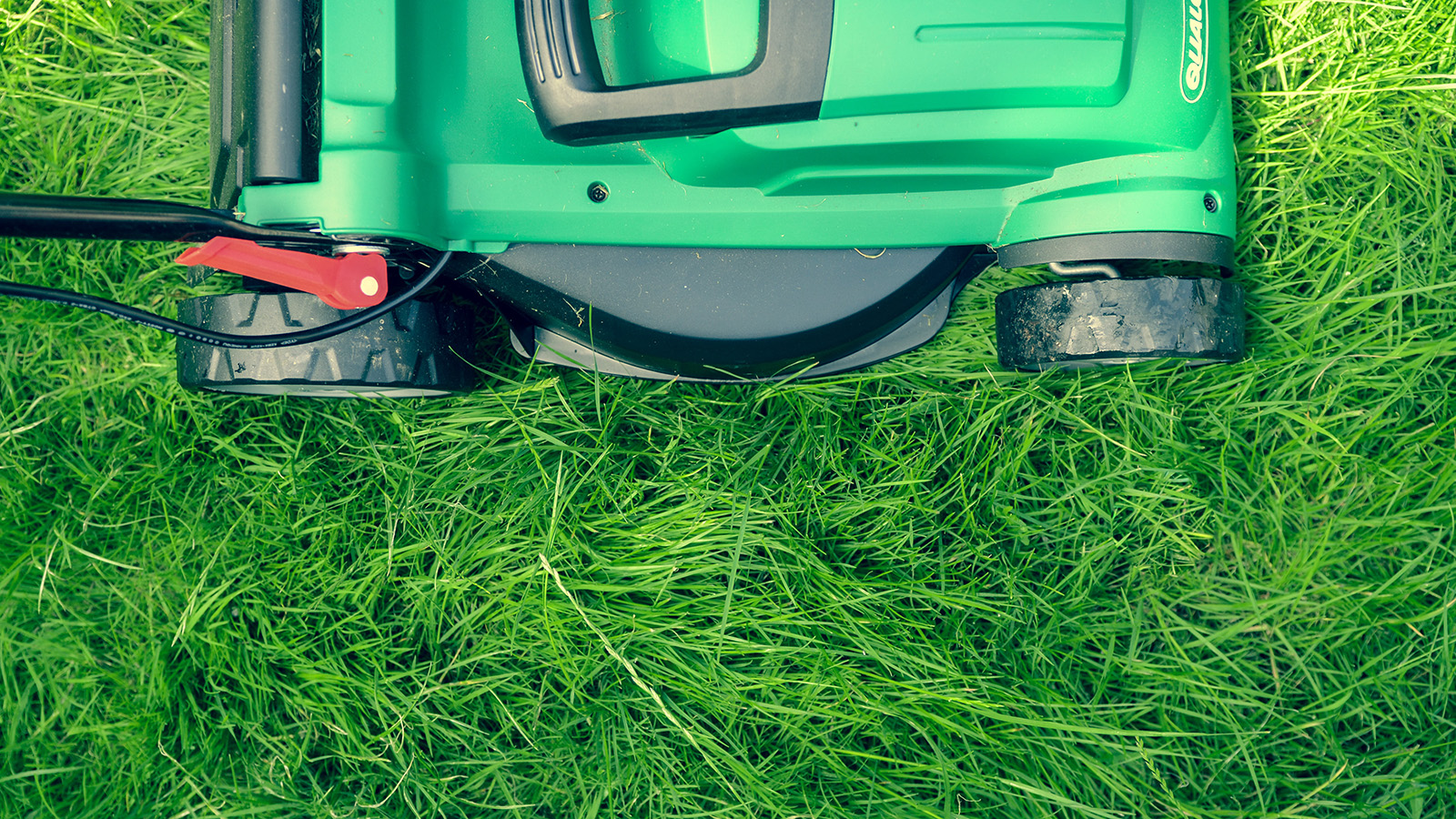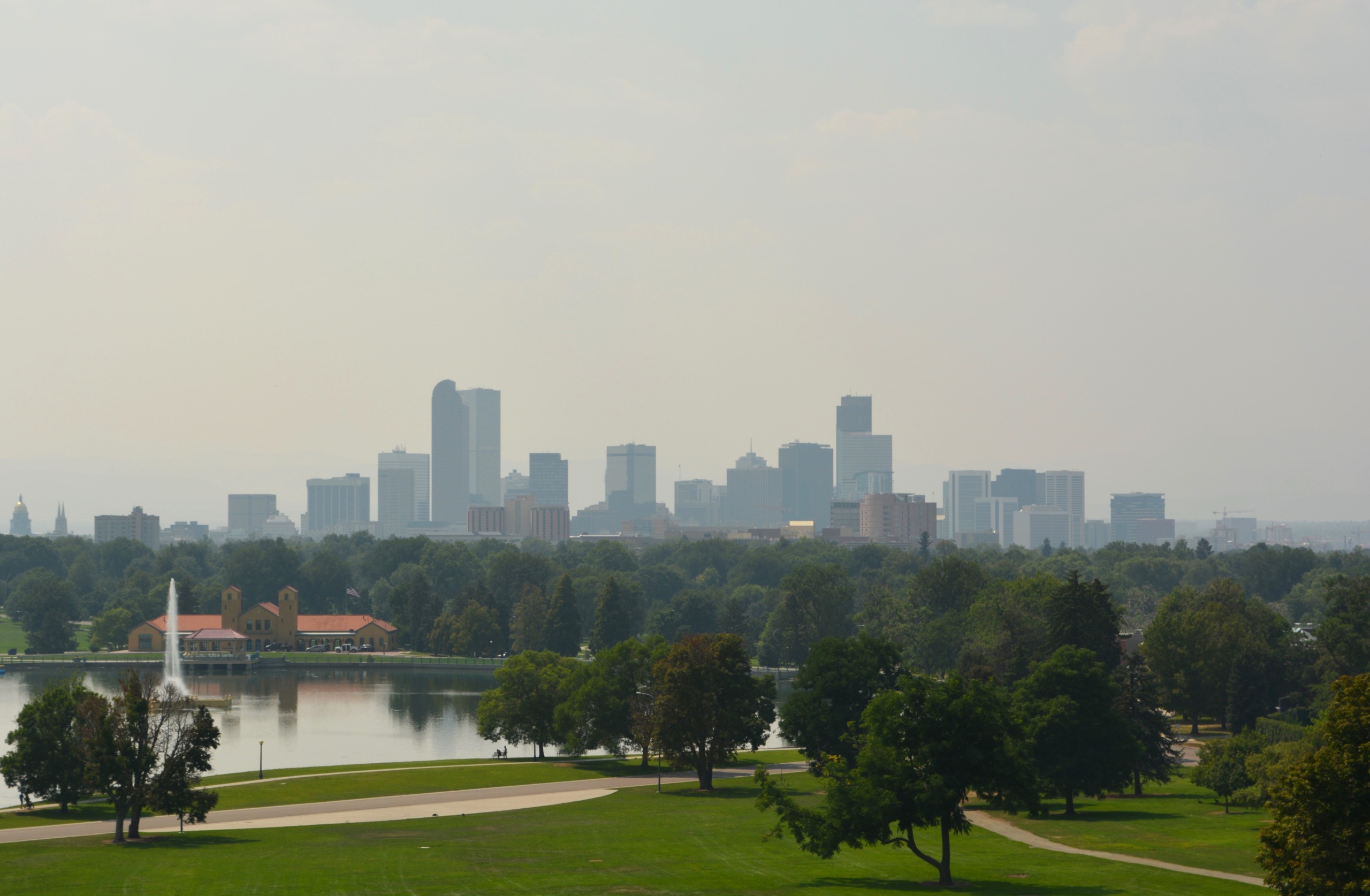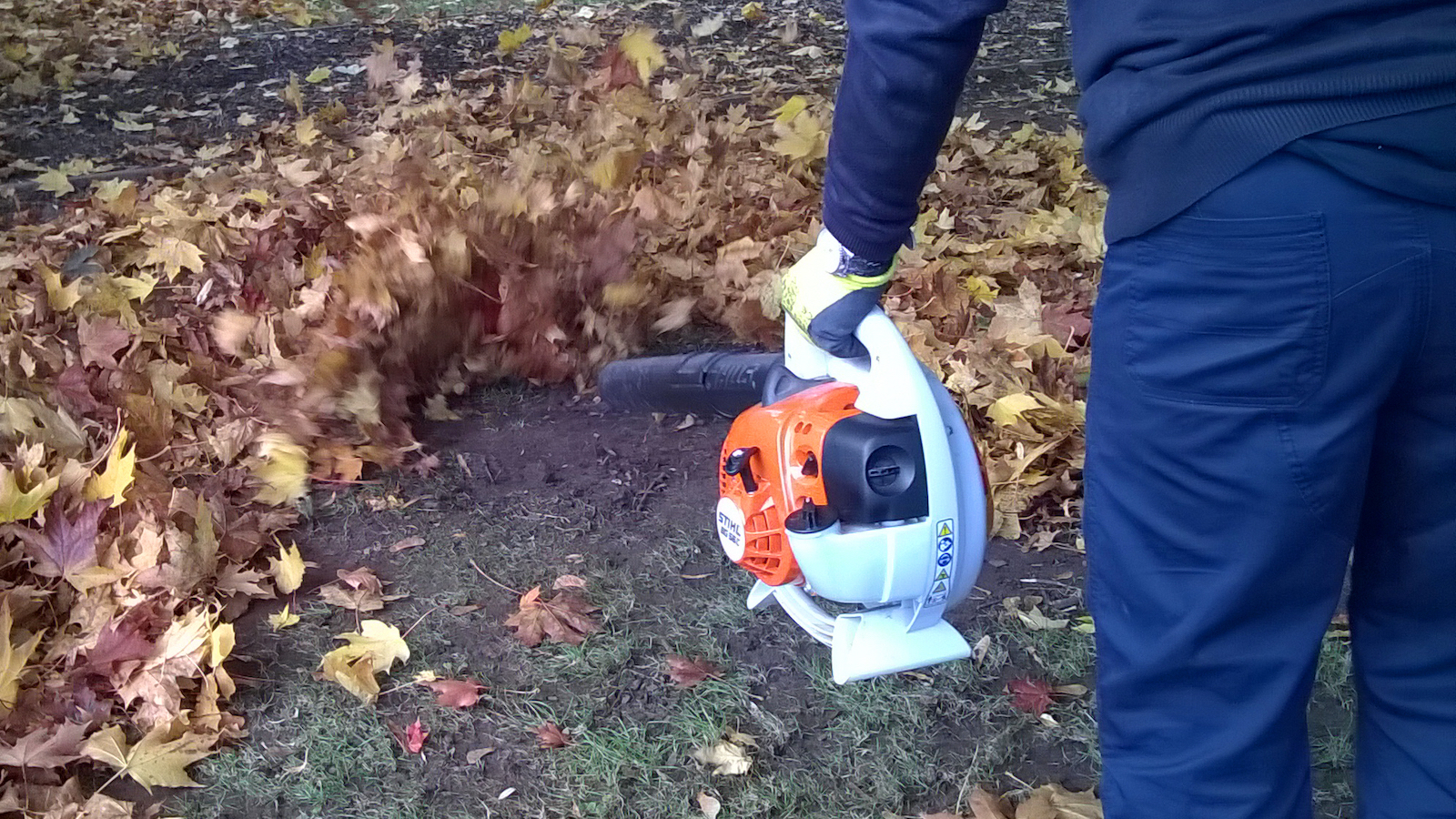
Public comment to Air Quality Control Commission on pollution from lawn equipment
Clean air advocate Kirsten Schatz submitted a letter to air quality commissioners encouraging them to tackle the shocking amount of pollution from gas lawn equipment
November 28, 2023
Air Quality Control Commission
4300 Cherry Creek Drive South
Denver, CO 80246
Re: Regulation 29
Dear Commissioners,
Thank you for your hard work and dedication to improving air quality in our state.
I am the clean air advocate for CoPIRG Foundation. Through research, public education and outreach, we serve as counterweights to the influence of powerful special interests that threaten our health, safety and well-being.
We urge you to adopt the alternate proposal to Regulation 29 in order to cut as much pollution from lawn and garden equipment as quickly as possible. This action is critical to protecting public health and to meeting our air pollution reduction targets.
Our starting point in this work is the astonishing amount of pollution that gas-powered lawn and garden equipment produces – and the large potential benefit of making swift cuts from this sector.
Our new report, Lawn Care Goes Electric, drives this point home. Using state- and county-level data from the EPA’s latest National Emissions Inventory, we found that lawn and garden equipment in Colorado emitted an estimated 671 tons of fine particulates (PM2.5) in 2020 – an amount equivalent to that produced by more than 7 million typical cars over the course of a year. Five Colorado counties – Arapahoe, Jefferson, El Paso, Adams, and Douglas – earned the dubious distinction of appearing on the “Top 100” worst counties in the U.S. for both nitrogen oxide (NOx) and fine particulate emissions from lawn and garden equipment. Denver made the list for fine particulates and volatile organic compounds (VOCs).
In the nine counties comprising the Denver Metro/North Front Range ozone nonattainment area, lawn and garden equipment emitted an estimated 1,542 tons of NOx and 7,589 tons of VOCs in 2020. This equipment was also responsible for an estimated 531 tons of PM2.5 and 603,597 tons of CO₂. Our previous 2022 report showed that fully shifting the lawn and garden sector in the Denver Metro/North Front Range region away from gas-powered equipment could achieve approximately 18% of the cuts needed to bring ozone levels into compliance with federal air quality standards. We of course won’t know the exact amount of emissions reduced until we try, but clearly the potential benefits of aggressive action are significant.
We must also continue to tackle emissions from sectors such as oil & gas and transportation, and we appreciate the state’s work on these fronts. At the same time, we must not pass up the potential emissions reduction benefits of using every available policy tool to quickly transition away from gas-powered lawn equipment. Furthermore, these benefits are likely to be realized more quickly than cuts we can achieve in other sectors – both improving public health, and giving our region the best shot possible for meeting the EPA’s next deadline for compliance with the 2015 ozone standard.
We don’t need to tolerate this level of pollution when cleaner, quieter electric lawn and garden equipment is ready for prime time. Thanks to recent advancements in battery technology, rechargeable battery-powered lawn equipment offers residential users performance, value and convenience comparable to gas-powered models.
We recognize that the demands of commercial lawn care are different from, and greater than, those of residential users. But electric equipment is also making inroads in the commercial sector, with an increasing array of available options. Especially when it comes to the most polluting equipment, namely handheld tools and some push mowers that utilize inefficient two-stroke engine technology, electric equipment has proven to be a viable option for most commercial applications. For example:
- Electric lawn care companies exist up and down the Front Range already. These entrepreneurs and business owners report high customer demand for quieter, fume-free property maintenance and have found a variety of ways to make this equipment work for their business models. They report they also save money on operating costs versus traditional gas-powered equipment.
- The City of Fort Collins serves as an example for the public sector and is well on their way towards fully shifting away from gas-powered equipment for maintenance work on public property. In the name of improving air quality, the City’s Parks and Natural Areas Departments have made measureable strides toward electrification. According to a city official, Fort Collins Natural Areas, the Gardens on Spring Creek, and cemeteries all use nearly 100% electric maintenance equipment. The Parks Department, which owns the bulk of the city’s lawn equipment, has converted approximately 57% of their equipment to electric with plans to achieve over 80% within the next two years. This includes not just the push mowers and handheld tools that the Commission is considering regulating but also several large riding mowers. City staff share that beyond reducing emissions, electric equipment has proven to be quieter, safer, and often equally or more efficient than gas-powered alternatives for the employees who use them daily. They relayed that reports from staff in the field have been largely positive.
- To address concerns about certain types of electric tools, e.g. chainsaws, not being up to the task, we recommend that governments and companies consult with experts such as the American Green Zone Alliance (AGZA) to ensure they’re purchasing the right tool for the application. For the few exceptions in the realm of lawn and garden maintenance where gas equipment is needed, the proposals before the Commission contain reasonable exemptions to accommodate these needs.
- While performance and battery run-times for larger equipment such as riding mowers have dramatically improved in recent years, and costs have come down, they’re not yet fully on par with traditional gas-powered equipment, so it makes sense to limit the regulations at this time to the dirtiest gas-powered lawn equipment such as push mowers and handheld tools.
Electric lawn equipment sometimes has a higher initial price tag but saves money over time due to lower operating costs.
- Our report discusses this in more detail but essentially the average residential user will save money over a maximum of five years by using an electric mower compared to a gas-powered one.
- For commercial users, there are of course additional upfront costs such as extra batteries and charging infrastructure, but the potential cost savings over time are even greater because of the high fuel and maintenance costs of gas equipment and the higher utilization rates of this equipment versus residential users.
- Financial incentives such as the 30% statewide discount on electric equipment that launches in 2024, vouchers and grants from entities such as the RAQC’s Mow Down Pollution program, and even a federal Inflation Reduction Act tax credit for large electric mowers can help reduce the upfront cost for individuals, public entities, and companies switching to electric equipment. We support finding ways to increase funding for and awareness of these programs. But now is a great time to make the switch, while there is money available.
- Beyond cost, a transition like this requires people and organizations to learn to do something a little differently than they’ve always done things. Groups like AGZA can help provide the education and training for governments and commercial operators alike to help them make the switch successfully.
There are strong signs the market is accommodating a rapid transition to electric lawn equipment. Retailers such as Home Depot and Ace Hardware and local and regional suppliers such as High Altitude Equipment and Colorado Golf & Turf are supplying Coloradans with the electric lawn equipment needed to get the job done. Home Depot has a goal of 85% of sales of push mowers and handheld equipment to be electric across all of the U.S. and Canada by 2028. In the meantime, they and other retailers, distributors, and manufacturers are all gearing up to comply with California’s small engines rule that will go into effect on Jan. 1, 2024, which will stop the sale of small off-road engines of 25 horsepower or less – including those used in lawn and garden equipment. The market is shifting and Colorado should be on the front end of realizing the clean air benefits of that shift.
With thousands of lawn equipment tools being sold in our region each year, as long as we continue to allow the sale of the highly-polluting gas-powered equipment, we will need to look elsewhere for years down the road to get the emissions cuts needed to clean up our air. Each year that we allow store shelves to be stocked with the dirtiest gas-powered lawn tools means another decade or longer that we miss out on reducing the harmful pollution emitted by the equipment sold in that one year, because it will take years for that new equipment to be retired.
The geographic scope of the alternate proposal to Reg. 29, which targets our ozone nonattainment area as opposed to the entire state, makes sense. Stronger policies such as a sales prohibition and seasonal use restrictions for public entities and commercial operators may not be right for statewide application at this time. But it is the right fit for the DM/NFR region that’s suffering from such high levels of ozone. The statewide discount on electric lawn equipment established by SB23-016 should help the rest of the state move in the right direction but time is of the essence here in the ozone nonattainment area both to protect the public from further harm to our health and to be able to measure attainment with federal ozone standards before the next deadline.
Additional factors to consider include:
- Once reformulated gas kicks in next summer, it will benefit the state to be able to demonstrate several bold actions taken to cut emissions so this requirement will be lifted as soon as possible.
- In passing the ozone SIP last year, you asked the state to evaluate additional control measures, including for the lawn equipment sector. Building on work dating back years, the RAQC conducted months of research and stakeholder engagement to produce their proposal, which has been further refined through the process with other rulemaking parties this fall. We believe this proposal most fully addresses your request to deliver real emissions reductions to protect public health and our quality of life.
Coloradans are ready for a change on this front. No change is without friction, but plenty of people already hate the fumes and excessive noise associated with leaf blowers and other gas-powered equipment. People get that it’s absurd that we’ve been tolerating so much pollution and noise just from cutting grass and blowing leaves around.
We believe both that there’s been sufficient stakeholder engagement to date and that the cost to further delaying action is too high. The idea to address emissions from lawn and garden equipment isn’t new and this conversation started years ago. Building on that work, the RAQC conducted months of research and stakeholder engagement this past year to produce their proposal. Add in the refinements born of collaboration during the rulemaking process so far this fall, on top of the stakeholder engagement conducted by the administration to prepare for Gov. Polis’s executive order on lawn equipment in September and the significant market shifts and electrification announcements from retailers like Home Depot, and we are at a good point to move forward to protect public health by cutting emissions from this sector.
Opponents of bold action to cut pollution from lawn and garden equipment may say:
- … that’s it’s too soon, that we can’t be ready in time to meet the timeline suggested in the alternate proposal. But the market is getting more and more ready for this transition every day, and there are companies and cities in our region showing that the switch can be made, now.
- … that making the switch to electric equipment will be costly. But if we don’t get pollution cuts here, we’ll need to get them somewhere else – somewhere even more complexly tied to our state’s economy. We know that governments, companies, and individuals will save money by using electric lawn equipment versus gas-powered. And we must not discount the cost savings in terms of fewer ER visits, fewer missed days of work, and less ear-splitting noise in our neighborhoods – not to mention longer life expectancy from reduced ozone exposure.
- … that electric equipment isn’t up to the task. Again, there are business leaders and cities in our region showing that day-in and day-out, these tools can get the job done. And one of the largest economies in the world, California, is making the switch in just a few weeks.
- … that we should take a “wait & see” approach before requiring commercial operators to ditch the dirtiest equipment for use during the summer months. Because commercial use represents the bulk of emissions from lawn and garden equipment, we can’t wait and leave this stone unturned. For the sake of public health and for demonstrating attainment with the 2015 ozone standards, we need to act on each major front: sales of the most polluting equipment, use by public entities, and use by commercial operators, as quickly as possible.
We know that gas-powered lawn and garden equipment produces an unacceptable amount of pollution in our region. Electric equipment is up to the task and will save us all money over time. With the right amount of education and support, even the commercial sector can make the switch to cleaner, quieter electric equipment within the next couple years. It’s not too much to ask. The market is getting ready. People are ready for a change and to enjoy cleaner air and quieter communities. And after years of work and months of refinement, the policies outlined in the alternate proposal for Regulation 29 are ready to deliver generous emissions reductions benefits that we can all count on and benefit from.
Thank you for your consideration.
Sincerely,
Kirsten Schatz
Clean Air Advocate
CoPIRG Foundation
Topics
Authors
Kirsten Schatz
Clean Air Advocate, CoPIRG Foundation
Kirsten joined CoPIRG's staff in 2022 and is focused on fighting for clean air for Coloradans and transforming transportation systems. Previously, she oversaw The Public Interest Network's efforts to engage alumni/former employees and volunteers in the network's work, specializing in communications and organizing events in dozens of cities. Kirsten lives in the Denver area with her husband and two children, where she is an avid hiker, biker, church choir member and gardener.
Find Out More

How to unlock savings with Colorado’s new electric lawn mower tax credit

Lawn care goes electric

Recommendations for the Colorado Legislative Interim Committee on Ozone Air Quality

